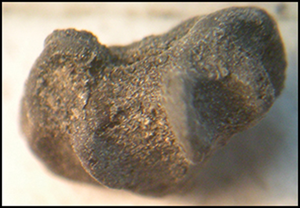Crossref Citations
This article has been cited by the following publications. This list is generated based on data provided by
Crossref.
Capriles, José M.
García, Magdalena
Valenzuela, Daniela
Domic, Alejandra I.
Kistler, Logan
Rothhammer, Francisco
and
Santoro, Calogero M.
2022.
Pre-Columbian cultivation of vegetatively propagated and fruit tree tropical crops in the Atacama Desert.
Frontiers in Ecology and Evolution,
Vol. 10,
Issue. ,
Socha, Dagmara M.
Sykutera, Marzena
and
Orefici, Giuseppe
2022.
Use of psychoactive and stimulant plants on the south coast of Peru from the Early Intermediate to Late Intermediate Period.
Journal of Archaeological Science,
Vol. 148,
Issue. ,
p.
105688.
2022.
Drug-fuelled parties helped ancient Andean rulers to hold power.
Nature,
Vol. 601,
Issue. 7893,
p.
300.
Jennings, Justin
Biwer, Matthew E.
and
Conlee, Christina A.
2022.
Assembling the early expansionary state: Wari and the southern Peruvian coast.
Journal of Anthropological Archaeology,
Vol. 65,
Issue. ,
p.
101395.
Driscoll, Joshua
and
Damm, Jacob C.
2023.
Chemistry in the Service of Archaeology.
Vol. 1446,
Issue. ,
p.
11.
Jennings, Justin
and
Berquist, Stephen
2023.
Ayllus, Ancestors and the (Un)Making of the Wari State.
Cambridge Archaeological Journal,
Vol. 33,
Issue. 2,
p.
349.
Reid, David A.
2023.
The role of temple institutions in Wari imperial expansion at Pakaytambo, Peru.
Journal of Anthropological Archaeology,
Vol. 69,
Issue. ,
p.
101485.
Lameira, Adriano R.
and
Perlman, Marcus
2023.
Great apes reach momentary altered mental states by spinning.
Primates,
Vol. 64,
Issue. 3,
p.
319.
Lema, Verónica S.
2024.
Contemporary Uses of Vilca (Anadenanthera colubrina var cebil): A Major Ritual Plant in the Andes.
Plants,
Vol. 13,
Issue. 17,
p.
2398.
Nash, Donna J.
Biwer, Matthew E.
and
Witte, Emilee
2024.
Dreg Deposits and Domestic Beer Production: Assessing the Ubiquity of
Chicha
Production in the Wari Empire
.
Ethnoarchaeology,
Vol. 16,
Issue. 1,
p.
163.
Amuedo, Claudia G.
and
Lema, Verónica S.
2024.
Pre-hispanic Datura ferox L. in the Southern Andes: archaeobotanical evidence from an Inca archaeological site at Salta, Argentina.
Vegetation History and Archaeobotany,
Vol. 33,
Issue. 3,
p.
441.
Jennings, Justin
2024.
Wari: Imperialism, Low Power, and Globalization in the Middle Horizon Central Andes.
Journal of Archaeological Research,
Lema, Verónica S.
2024.
Archaeologies of Smoking, Pipes and Transatlantic Connections.
p.
189.
